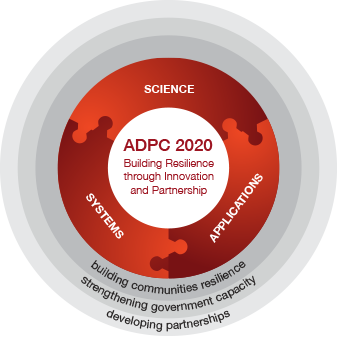
SCIENCE
ADPC is using scientific knowledge to identify, quantify and understand risk. Examples of our scientific work include, but are not limited to, downscaling modelling to local scales for emergency planning; using GIS remote sensing to identify risks; and economic modeling for risk financing.
SYSTEMS
Once the risk is understood, ADPC aims to institutionalize or strengthen systems to address the risk. For example, ADPC has supported national-level frameworks on DRR in several countries; strengthened the capacity of sub-provincial disaster management officials by supporting the DRR process and making sure procedures are in place; and most importantly, ADPC ensures that the policies and guidelines that the national frameworks include are implemented. We’re furthermore trying to ‘link-up’ the bottom-up approach with the sub-national level.
APPLICATIONS
The final step to ADPC’s work is to apply the scientific knowledge gained once the systems are in place. This includes, for example, integrating disaster risk reduction into development planning processes. ADPC’s work in urban management, for example, reaches out to other sectors to make sure that knowledge on DRR is put into place. In an urban context, this may include working with city-level planners on contingency planning.